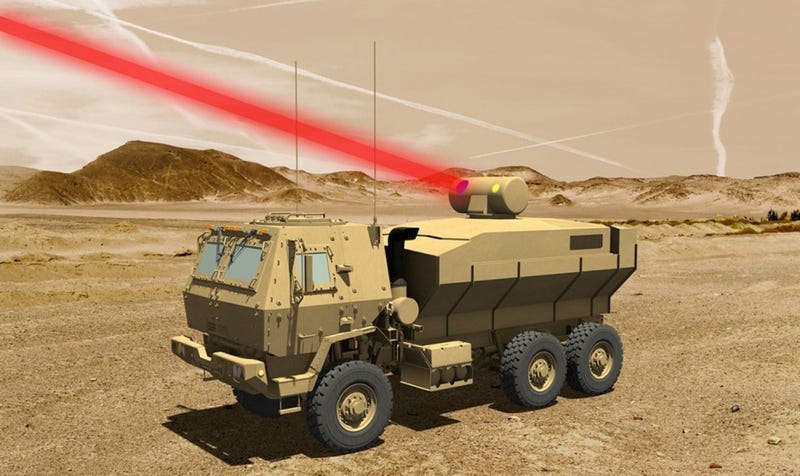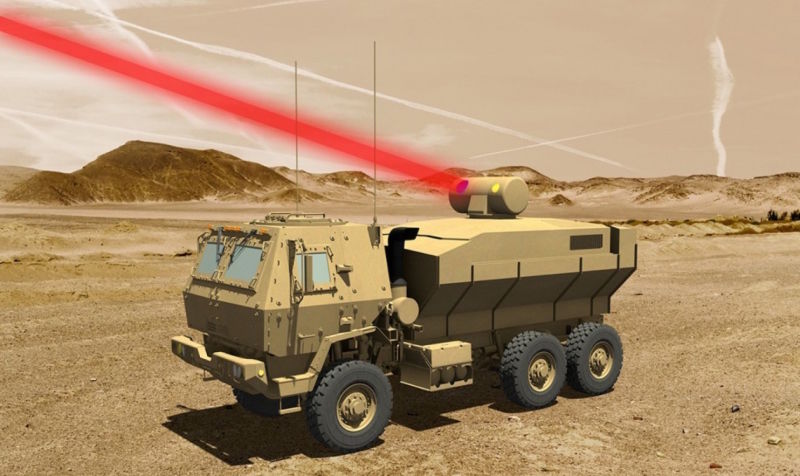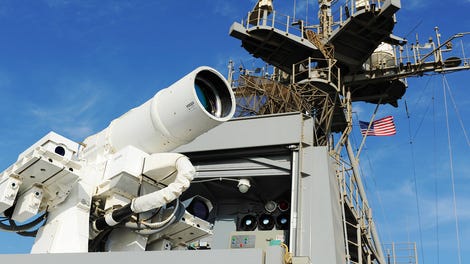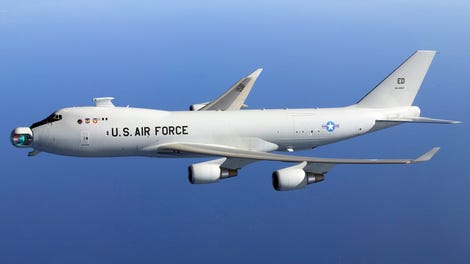
Hopefully, days in which the U.S. Army shoots down drones with $3 million Patriot missiles will come to an eventually end when the service starts using a 60-kilowatt laser system in a few months.
Earlier this month, the Lockheed Martin laser produced a 58 kilowatt beam—a record, according to the company—and by the time the Army gets the system, it is expected to reach its 60 kilowatt potential. Lockheed Martin says the laser is a “beam combined fiber laser” that brings together individual lasers, generated through fiber optics, to generate a single, more powerful beam.
Advertisement
Advertisement
Lasers have long been the stuff of science fiction, but they’re becoming a reality in modern warfare. As Popular Mechanicsexplains, lasers are narrow beams of light that do damage by superheating their targets.
The strength of a laser isn’t expressed in pounds like an aircraft bomb, or the diameter of a howitzer barrel. Military lasers are rated by the electrical power they consume, in kilowatt—and eventually megawatt—range.
Dr. Kelly Hammett, Chief Engineer for Directed Energy at the Air Force Research Lab, told Popular Mechanics: “Lasers can deliver precise and tailorable effects against a wide class of targets near-instantaneously and at a very low cost per shot. The type of gradual effects a 30 kW laser can deliver includes: deny, degrade, disrupt, and destroy of targets such as UAV’s or small boats at a few kilometers range.”
Emphasis mine because that’s at 30 kilowatts. Imagine what they can do at twice that.
“The inherent scalability of this beam combined laser system has allowed us to build the first 60kW-class fiber laser for the U.S. Army,” said Robert Afzal, Ph.D., senior fellow for Laser and Sensor Systems, in a news release. “We have shown that a powerful directed energy laser is now sufficiently light-weight, low volume and reliable enough to be deployed on tactical vehicles for defensive applications on land, at sea and in the air.”
Sponsored
If such a laser could be deployed in the Middle East, it could be a game-changer for how the U.S. Army deals with enemy drones. Yesterday you saw how a U.S. Army ally shot down an enemy drone with a Patriot missile. Afzal said that the system could be added to “tactical vehicles for defensive applications on land, at sea and in the air.” More specifically, as The Washington Post notes, the system is light enough to be mounted on a Heavy Expanded Mobility Tactical Truck (HEMTT) designed for carrying large artillery.
While the move seems like comically overkill on its face, and a waste of money, the reality is that there really aren’t that many alternatives. For one, current radar technology makes it challenging to distinguish between an incoming rocket, missile or a drone. Also, laser technology, though rigorously discussed over the years, hasn’t been a common stable on the battlefield. The U.S. Navy has already begun using lasers, as Foxtrot Alpha previously reported. The United States has tried using lasers on planes, but that venture was much less successful, however.
One beam-based system the Navy is experimenting with is the Laser Weapon System (LaWS), which is aboard the USS Ponce. As of 2013, it was in development for six years at a cost of $40 million.
For the Army Lockheed Martin’s laser system is much more promising and the financial incentives would be enormous. For one, it would only cost a single buck to fire a single laser beam as opposed the more than $3 million it costs to use a Patriot. Lasers are also less likely to cause collateral damage against smaller targets like drones. In 2015, Lockheed Martin used a 30 kilowatt laser to disable a truck a mile away.
Advertisement
Advertisement
The 60 kilowatt beam system that is being sent to the Army has yet to be used in combat, but if it proves to be successful, it could be a major small-budget item that could save the Pentagon millions in missile spending.
And, of course, the Army wouldn’t shooting down drones with something that costs enough to buy a mansion.
















